The turbocharger was perhaps one of the greatest automotive inventions. You can slap a turbo onto a smaller engine to give it the thrust of a bigger, likely thirstier engine. The modern diesel also wouldn’t be the same without turbocharging. Yet, it’s not often that you’ll find a turbo on a motorcycle. Four decades ago, Japan’s big four motorcycle builders all put out wild turbocharged two-wheelers that sounded like the future, and had more lag than an old computer trying to play CRYSIS. These motorcycles all tried to solve one interesting problem, and the first was the 1982 Honda CX500 Turbo.
This story takes us back to the wonderful time in Japan when technological development was mind-boggling. In the aftermath of World War II, the country focused on reconstruction as well as catching up. Japan’s Ministry of International Trade and Industry wanted to reform the country’s industries and supercharge Japan’s presence on the world stage. It would promote the creation of a Japanese people’s car, and sought to streamline Japan’s industries to give the most attention to the strongest firms. Soon, several Japanese industries saw rapid growth from cars and steel to shipbuilding and electronics.
Japan then experienced a perfect mix of circumstances, Stanford’s Japan Digest notes. The Korean War pumped up the economy as Americans purchased Japanese goods. In the 1950s, the country had a growing population of young, well-educated people who wanted to move away from rural farms and into industry. The country and its businesses invested heavily in growth and adopted new manufacturing processes. Engineers began printing out new inventions left and right. Honda was in the thick of it, creating some of its own rockstar cheap trucks:
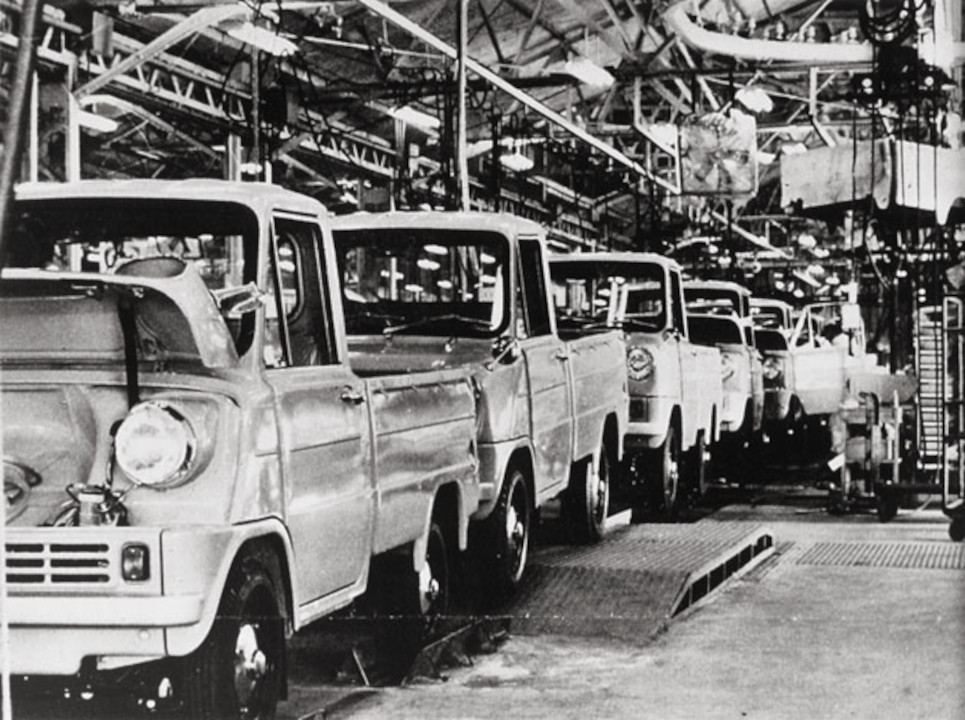
Japan’s economy began growing by impressive margins each year. A lot of this success, the Harvard Business Review argues, is because the country spent decades laser-focused on becoming an economic superpower, sometimes at the expense of other goals. Massive business groups were formed, industries became more self-sufficient, and technology spread across the country at a rapid rate. Japanese companies weren’t as much concerned with short-term profits as they were with just gobbling up massive amounts of market share. The Japanese government was right there, picking and choosing the industries and businesses it thought were winners. Japan won on mass production.
This, and more factors, led to what is often referred to as Japan’s ‘Economic Miracle.’ This period of insane growth was hampered by the 1970s oil crises, but Japan still managed to keep growing in the aftermath. Eventually, Japan stormed into the infamous ‘Bubble Era’ of the 1980s, when money practically fell from the sky and asset values were incomprehensibly high.
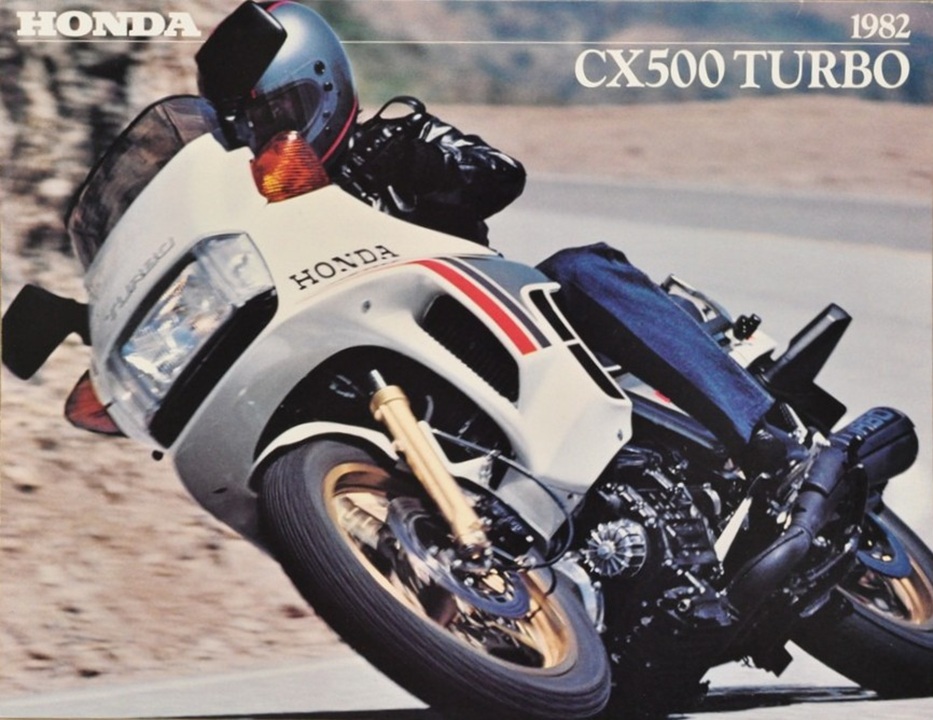
But this was also a time when Japan was creating technological wonder after another. This opener is important because it sets the stage for why Honda kicked off a short-lived turbocharged motorcycle rush in the early 1980s. The 1982 Honda CX500 Turbo wasn’t exactly created to solve a real problem, at least not at first. But it did end up becoming a fascinating part of motorcycle history.
Honda Had Something To Prove
As Cycle World reported in 1981, development of the CX500 Turbo began in the mid-1970s. Honda was on top of the world with the successes of its car division, and its motorcycles, like the CB750 Four, were becoming iconic machines. In 1975, Honda launched what it thought was the “ultimate motorcycle” in the Honda Gold Wing GL1000.
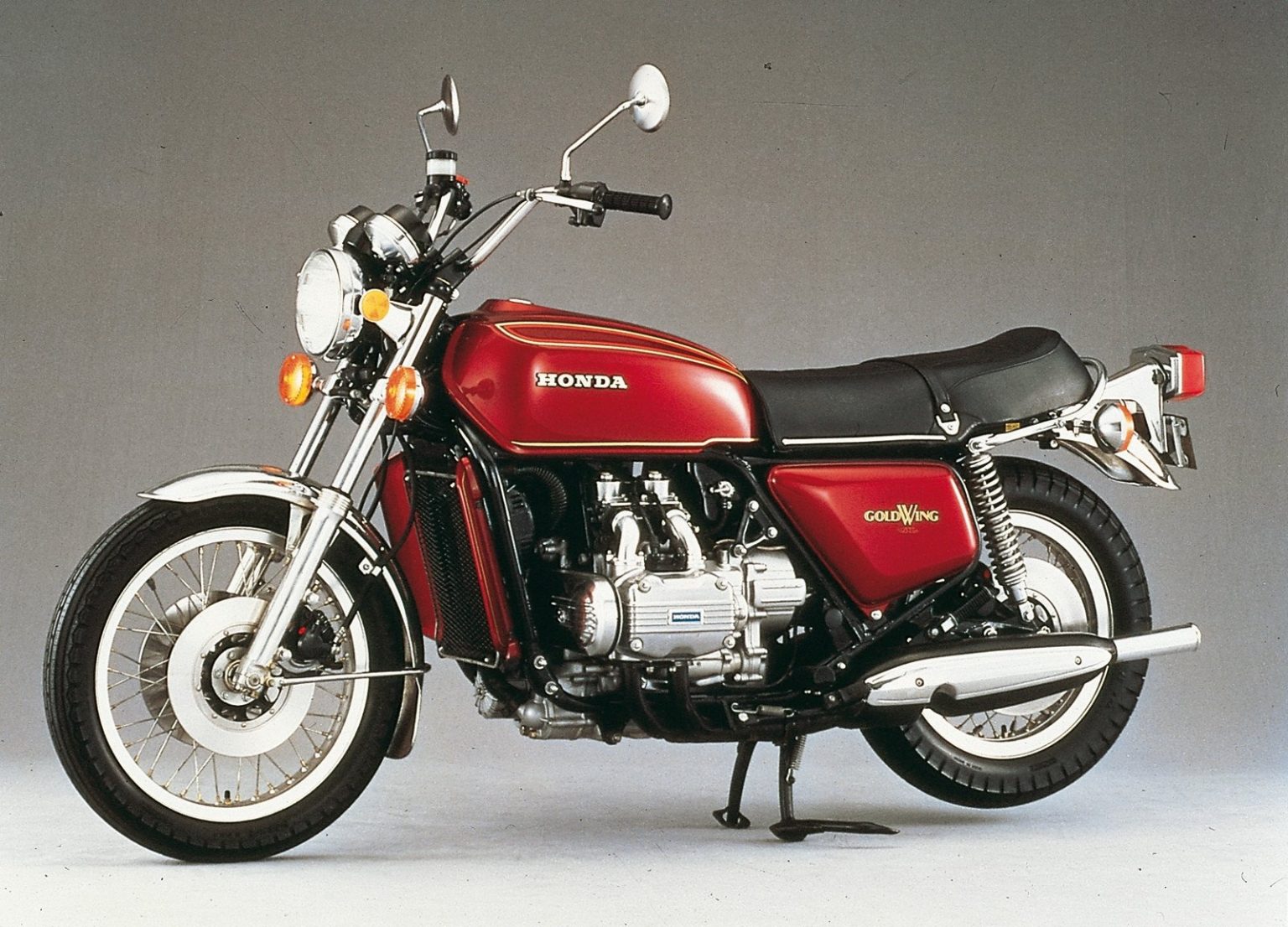
But Honda’s engineers, who crowded Honda’s then-new research and development center, wanted even more. They wanted to find the next greatest thing in motorcycling tech. More specifically, Cycle World wrote in a different piece, Honda engineers wanted to prove that the powersports division could be just as innovative as Honda’s car division. At the same time, Hot Rod magazine writes, it was just after the first oil crisis, and Honda believed that, in this new fuel-conscious world, there was a future in a motorcycle that was both powerful and very fuel-efficient. Perhaps even more ambitious than that is that Honda wanted to build a motorcycle that would appeal to more than just riders. They would do this through power and technology.
Honda’s engineers took an interest in turbocharging. These little metal snails had become a big deal by the mid-1970s, and there were both Indy cars and Formula One cars that had experimented with forced induction. Japan’s road cars had also seen turbocharging experiments in the 1970s.
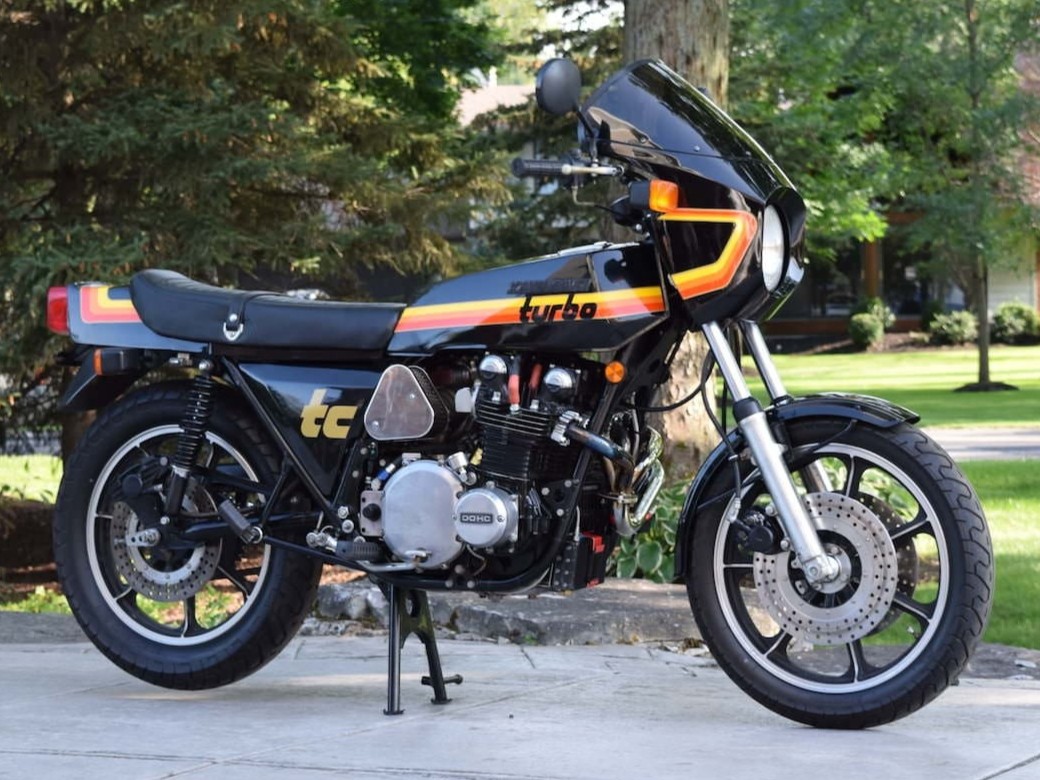
The promise of a turbo was huge. If done right, a turbocharged small engine could make the same amount of power as a big engine. When applied to a 1980s motorcycle, it meant that, at slow, around-town speeds, your bike would have the rideability and fuel economy of a smaller middleweight. But once you were deep into the rev band, and the snail spooled up? Now, you have the power of a liter bike. In theory, it was the best of both worlds.
There was precedent for it, too. There were already aftermarket turbo kits available in the 1970s. The first known Japanese turbocharged motorcycle that you could buy from a dealer was the 1978 Kawasaki Z1R-TC (above). This was a hopped-up turbo bike built by the Turbo Cycle Corporation and sold by Kawasaki dealers. However, some motorcyclists argue it wasn’t the first true factory-built turbo bike, since it wasn’t actually put together by Kawasaki.
A Marvel
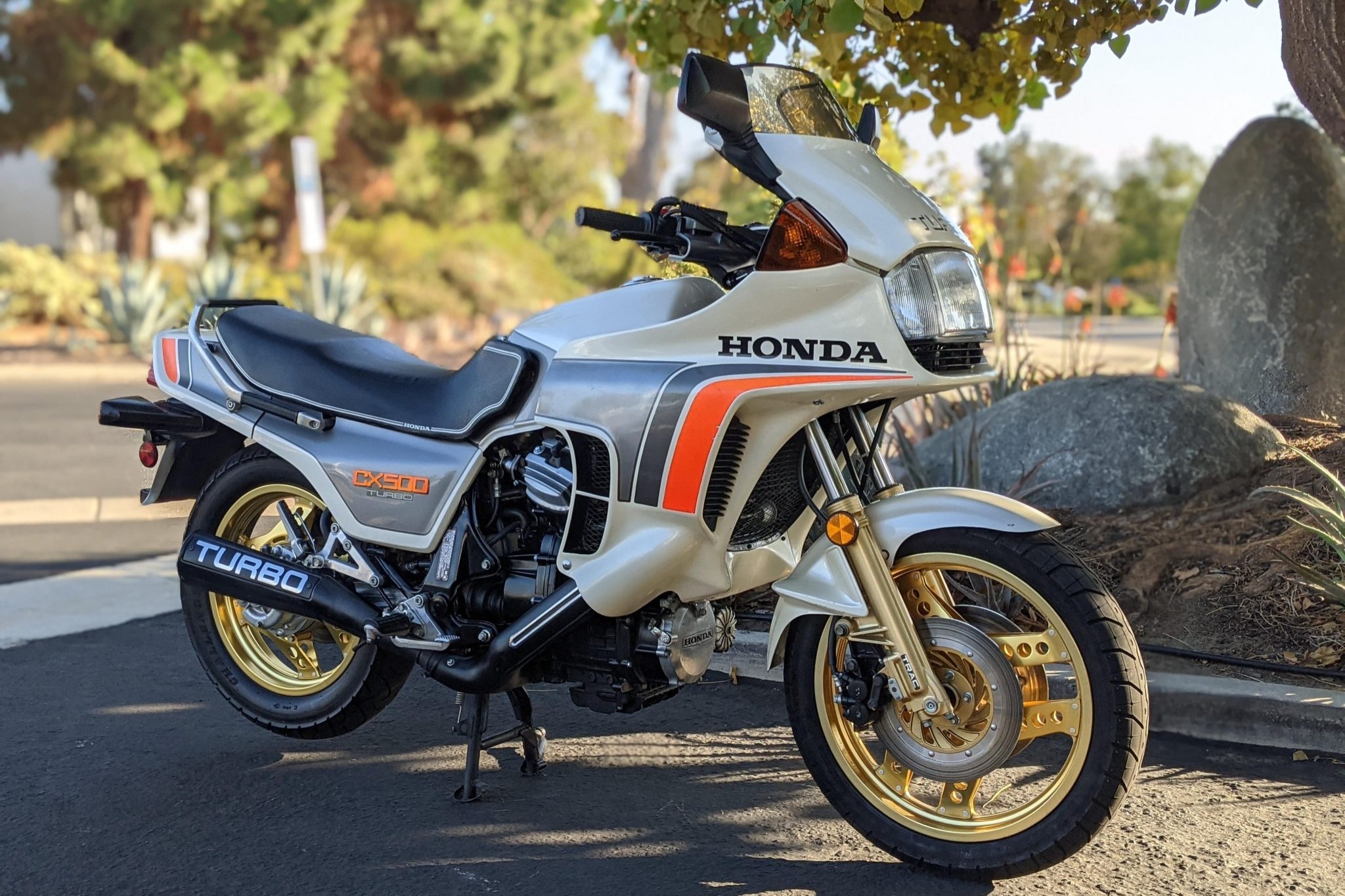
Honda’s engineers thought that if Honda were to come out with the first mass-produced turbo motorcycle in Japan, it had to be right from the jump. The engineers started with nailing down the concept. Honda figured that a production forced induction motorcycle had to be water-cooled for reliability, and that a two-cylinder arrangement was optimal to keep weight down. Coincidentally, Honda was still developing the CX500 (which would launch in 1978), so that bike became the platform for the turbo project. This forced the CX500 team to develop that bike’s 80-degree longitudinal V-twin to be able to handle much more power than originally expected. As a result, the CX500 Turbo engine has forged pistons, beefy wrist pins, enlarged connecting rods, a new crankshaft, and even new bearings borrowed from the CX650.
Then, Honda R&D turned to the turbocharger itself. Engineers noted that in the 1970s, the vast majority of the turbos on the market, even those found in motorcycle kits, were car turbos. This was a huge problem because comparatively itty bitty motorcycle engines didn’t put out enough exhaust to drive the compressor fast enough until nearly redline. This meant that the motorcycle rider would have a whole lot of nothing through the entire power band and then get a kick just in time to shift and lose boost again. Hagerty UK said that motorcycles with car turbos were wicked fast in a straight line, but effectively impossible to ride in any other situation.
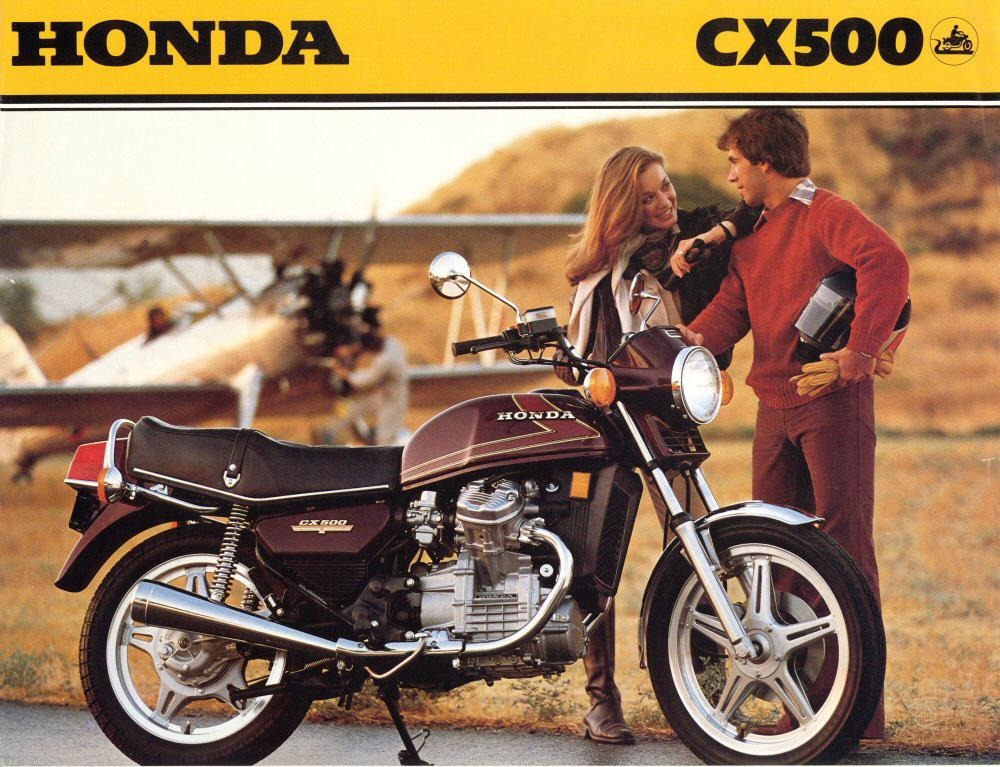
So, Honda worked with Japanese turbo manufacturer Harima Heavy Industries to create a motorcycle-specific turbo with a baby 48mm compressor with a wastegate. Ideally, this meant that the turbo would come on sooner and stay in boost for longer. In testing, the motorcycle was indeed more responsive with a 45mm turbo rather than a 60mm turbo from a car. The production CX500 Turbo made 19 pounds of boost and would later come with a 48mm turbo.
By 1980, the turbo project was a monster, and Honda had 50 engineers working to bring it to the market. These engineers were working with tough goals, too. The CX500 Turbo had to make more power than a CB900F, get better fuel economy than a naturally aspirated CX500, and do it with only limited turbo lag.
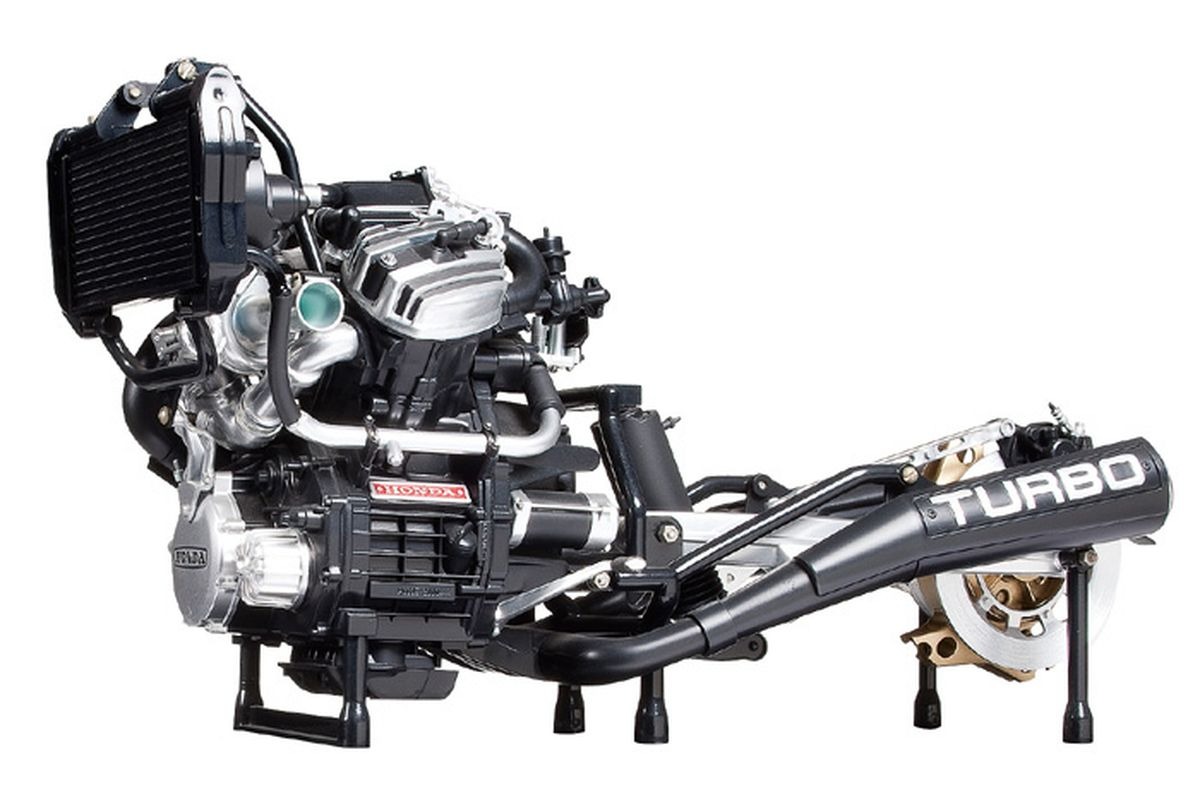
The engineers weren’t even close to being done yet. They improved engine response even further by adding two chambers between the compressor and the cylinder heads. This had the effect of giving boosted air somewhere to go when the intake valves were closed, and thus, charge velocity was intact when the valves opened again. A reed valve in the airbox prevents the charged air from spitting back out through the airbox during deceleration.
Then there was the engine management system, and Cycle World explains it best:
The fuel injection system is as interesting as the turbocharging system. How much fuel is injected, and when it is injected, is controlled by a digital computer. The computer gathers information from seven sensors and an electronic air flow meter, combining measurements of boost pressure, throttle opening and rpm to determine injection quantities. The sensors read pressure (P, in the accompanying diagram) and temperature (T,) between the airbox and the compressor; pressure in the surge tank (P2) and intake manifold (indicated PB, with two sensors used for safety); throttle opening; and coolant temperature (Tw). Injection pressure varies according to boost pressure. As pressure in the intake manifold rises, so does pressure rise in the fuel injection system, ensuring that the injected fuel sprays into the manifold at a given relative pressure.
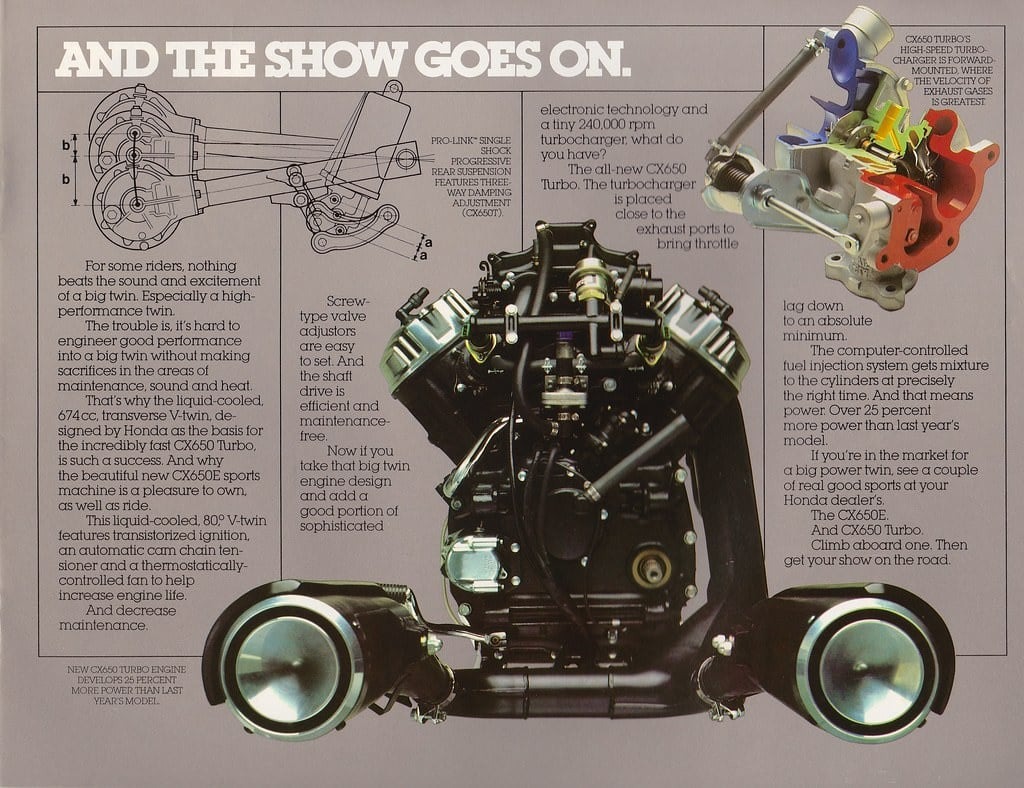
Preventing detonation (or pre-ignition) while running 19 psi boost on pump gas without water injection is a major consideration. To keep the engine from detonating itself to pieces, c.r. is a low, low 7.2:1 (a standard CX engine has 10:1 c.r.) and ignition timing is electronically controlled according to rpm and boost pressure. As boost rises or rpm drops, ignition timing is retarded, so full advance is reached under low-load, higher rpm conditions. Full throttle, fuel-boost operation at relatively lower rpm results in more retarded timing.
Using a computer to control fuel injection is common enough, but most injection computers measure only throttle opening and rpm, which is all that’s required on a normally aspirated engine. The CX500 Turbo’s computer is more complicated because it must also take into consideration boost pressure. Determining injection quantity by rpm and boost pressure yields the best performance at low rpm, low load; and determining injection quantity by rpm and throttle opening yields best performance at high rpm, high load. (In case of boost exceeding 19 psi, the computer shuts off the fuel supply.)
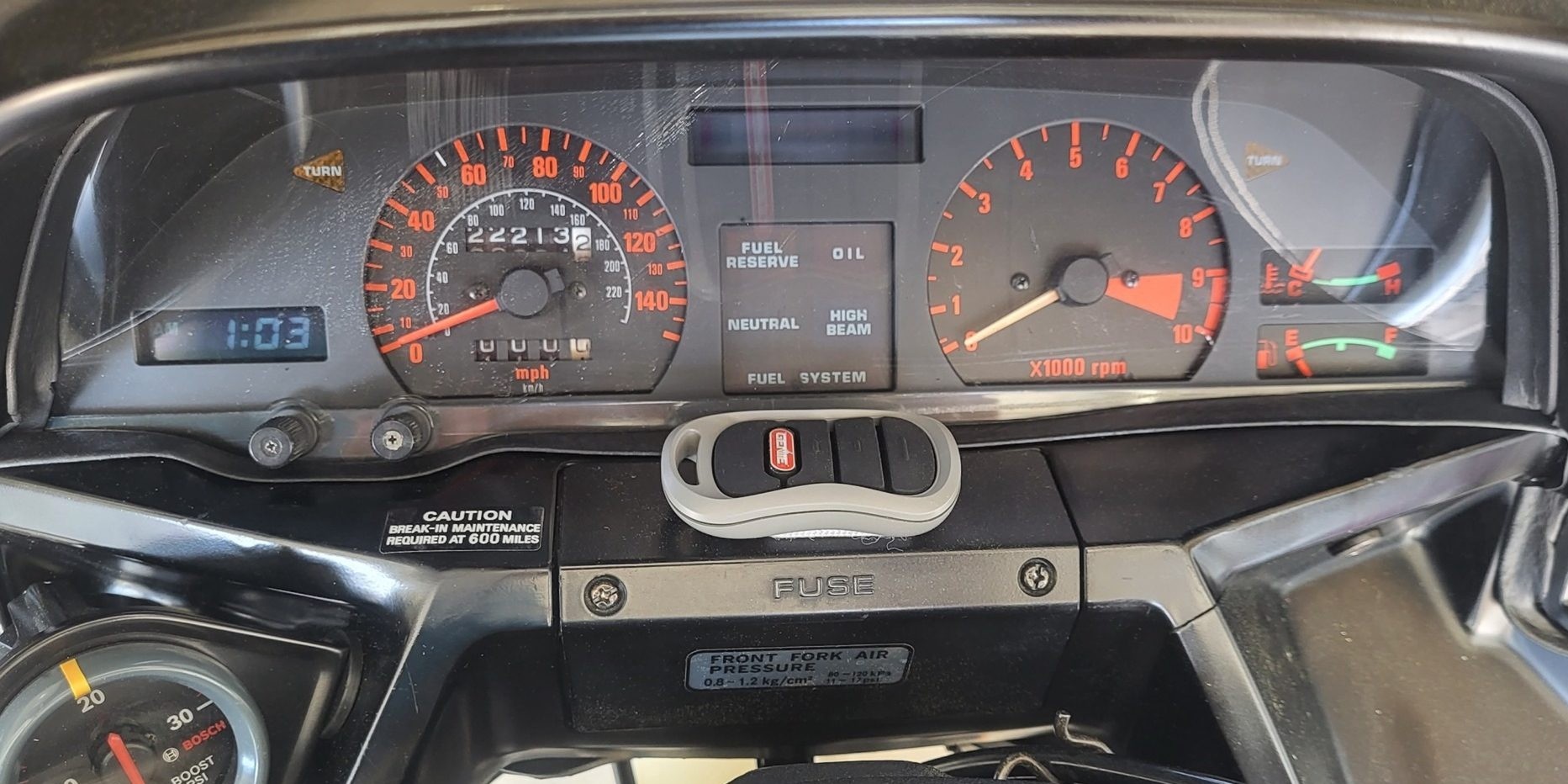
Electronic ignition joined the fuel injection as another nifty advancement. This was a complex system for its day, and Honda wanted to make sure that the first production turbo bike had Honda reliability. So, the fuel injection system has redundancies that allow it to continue operating in a partial state after a sensor failure. That way, you could still ride the bike home after something breaks. Of course, that’s not unlike a car, but this was on a motorcycle from the early 1980s! The bike even had fault indicators on its dashboard that worked like an early check engine light.
No Stone Left Unturned
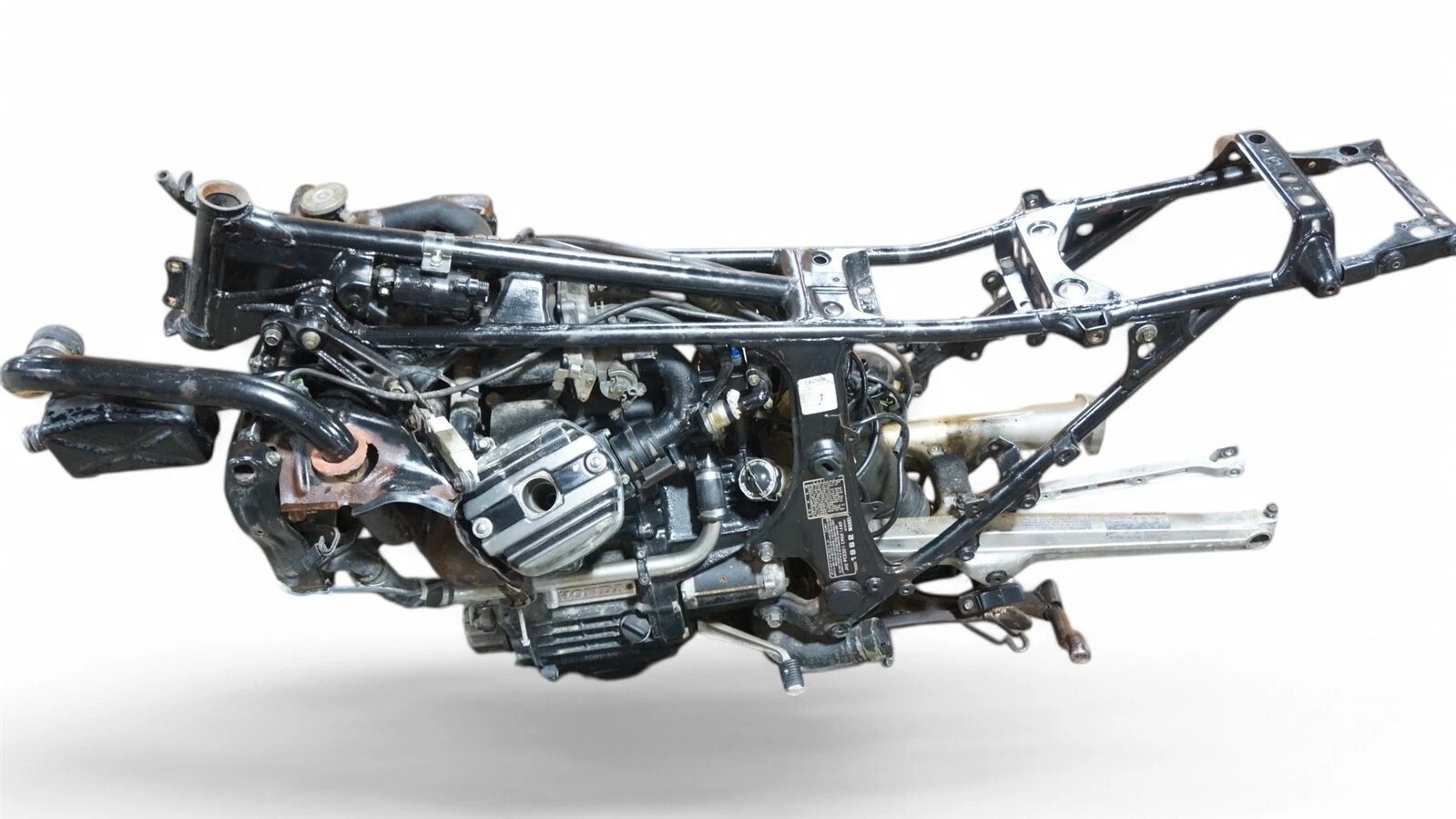
The result was that the engine punched out 77 HP, or a generous 29 HP more than a regular CX500. Honda didn’t stop there, either, as they gave the turbo version of the CX500 a beefed up frame, air suspension, three disc brakes, a clutch from the Gold Wing, alloy NR500 GP-style wheels, and an aluminum swingarm. The cooling system was also enlarged to deal with the extra firepower.
Reportedly, Honda also spent a month carving out the fiberglass fender and the windscreen in a wind tunnel. The idea was to make a bike that slipped through the air, but also provided great touring comfort by keeping the elements and engine heat off the rider.
The Honda CX500 Turbo was the darling of the motorcycle press during its development. It truly was something different and special. Honda promised to not only make the world’s first mass-produced turbo motorcycle, but make sure the package had usable power, smooth power delivery, and advance both small engine and motorcycle technology. Honda would file for 250 patents during the creation of the CX500 Turbo and its larger sibling, the CX650 Turbo.
Lots Of Lag, Lots Of Speed
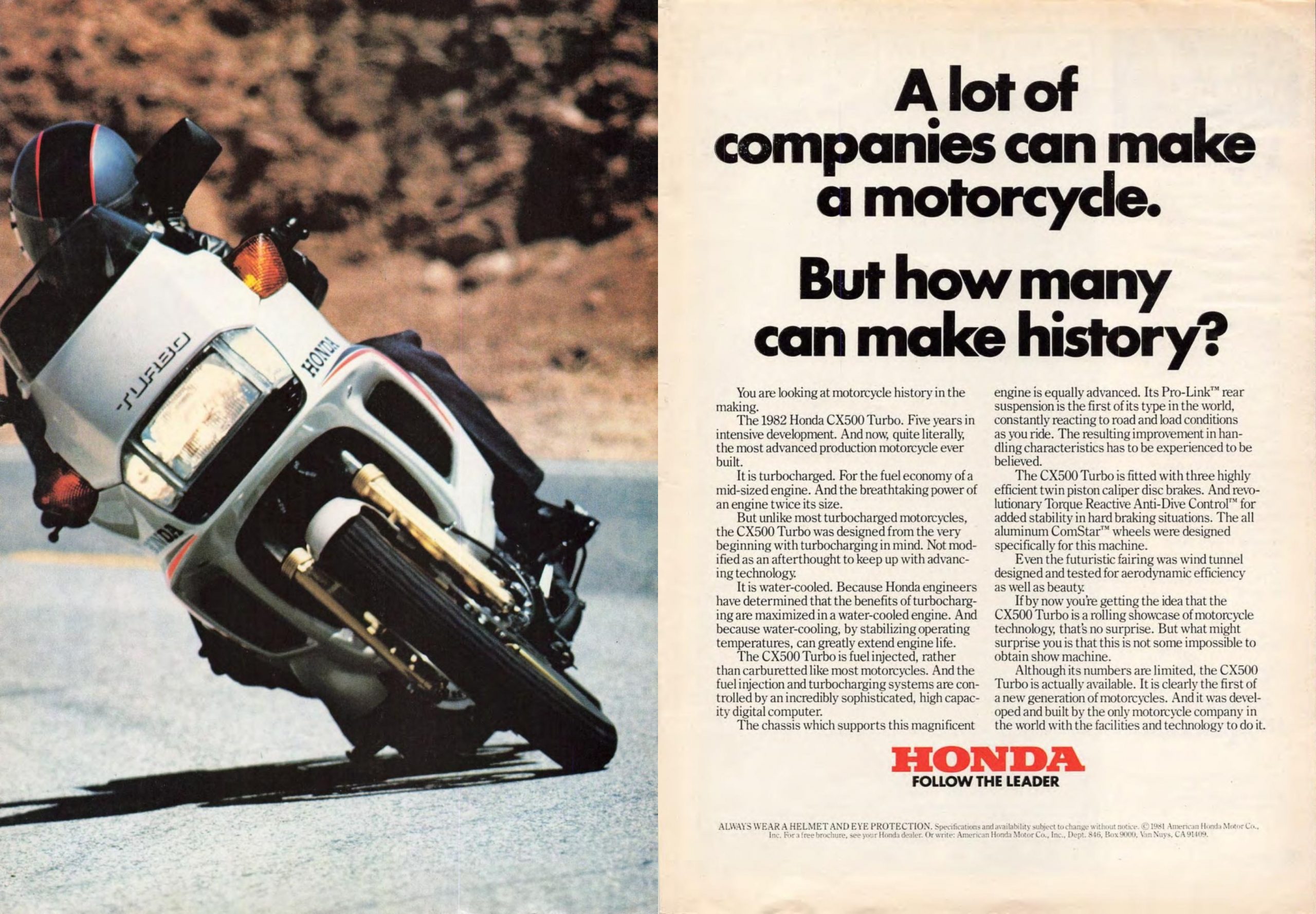
Motorcycle buff mags got their hands on early examples in 1981, and the stories were wild. Here’s what Hot Rod magazine said:
The CXT’s performance, however, barely suffers in the comparison. In throttle roll-ons at revs where the turbo’s boost pressure begins to rise (about 5000 rpm), the CXT demolished a 750 four, a 920cc V-twin, and steadily pulled away from Honda’s own sporting superbike, the 16-valve CB900F. There’s no question that a good rider could keep up with anything on a twisty road.
[…]
Indeed, the engine pulls so hard that you burst past the 9000-rpm redline before you know it, especially since the build-up comes with minimal vibration and noise. Honda claims the turbo cuts in at around 4000 revs, but you don’t really feel it until closer to 5000. Then it’s acceleration like gangbusters—and without a sudden turbo wallop. All is smooth and strong. We ran out of road trying to reach top speed, but a safe estimate is 125 mph. Overall mileage is up from 49 on the normally aspirated CX500 to 55 mpg on the CXT.
Our only complaints about the engine are a shuddering when lugging the motor at wide open throttle, and the usual lag between opening the throttle and the turbo kicking in. The computer and its precise fuel metering systems reduce this lag considerably, but it still takes a toll on rideability. Our test bike was a hand-made prototype, one of only seven in the world, so the specs aren’t yet finalized. Honda plans more work on the lag problem before the CXT goes on sale early in 1982. It’s not just the motor’s technology and performance that impressed us. This bike handles as well as any in the world. Since it’s big (578 pounds wet), the CXT feels heavy and a bit bulky at parking lot speeds, but high on Angeles Crest Highway where curves are strung together for 65 magic miles, the Turbo flies light and easy. You have confidence in the tires, the ground clearance, the brakes, the suspension and—a bike’s ultimate goal—in yourself. Huge 39mm air forks and Honda’s ProLink single rear shock mount all-new aluminum ComStar wheels. A distinctly European seating position is quite comfortable and easy to get used to. Dualpuck brakes have the best feel and stopping power on two wheels. The ride is smooth and the steering precise. For its size, handling can’t be faulted.
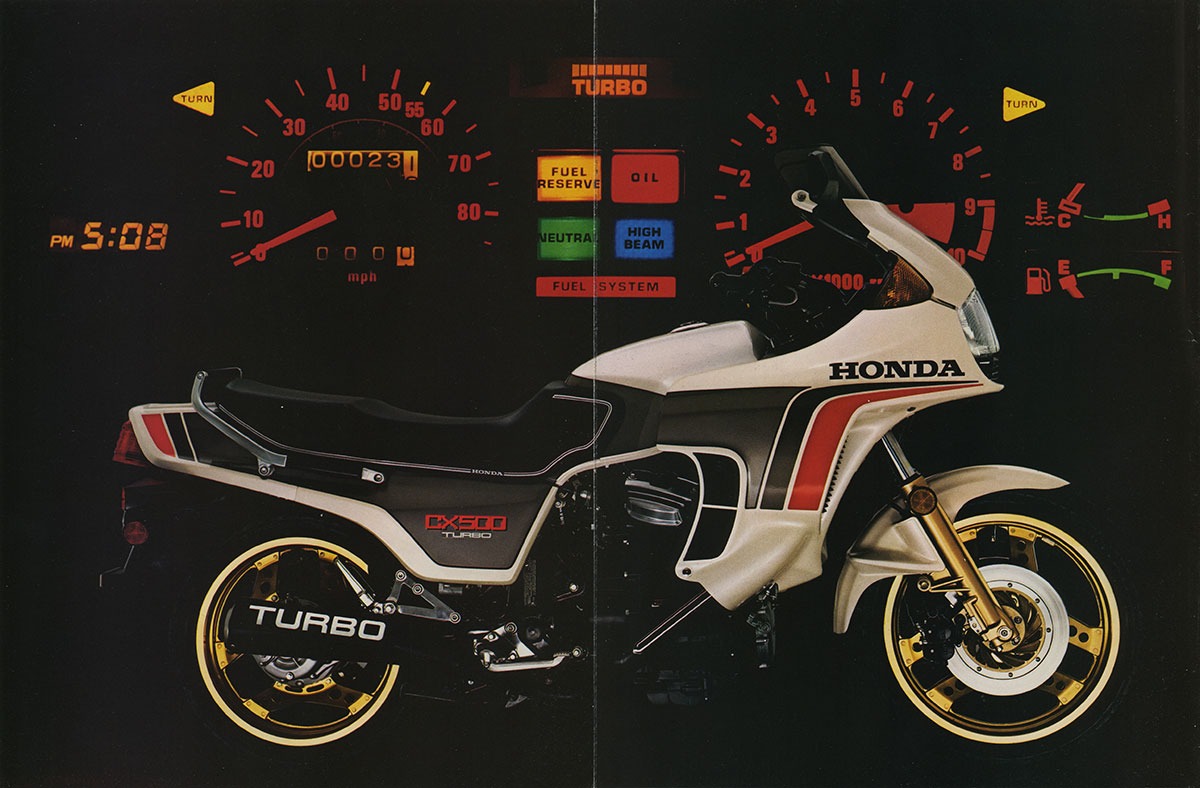
What I found interesting is that most reviews seemed to imply that, due to turbo lag, the CX500 Turbo was a bit of a dog when it wasn’t in boost. So you basically had to keep it at 8,000 RPM or higher at all times to really extract speed out of it. But if you were able to do that, you were able to beat bigger bikes.
Cycle World and Hot Rod both noted a quirk with the CX500 Turbo, and it’s that all of the tech, the beefed-up engine, and the gizmos had weighed the motorcycle down to 578 pounds. This meant that while the CX500 Turbo might have had half the displacement of the bikes it was designed to beat, it weighed nearly the same. The bike also got good fuel economy only when you stayed out of boost. Period reports claim fuel economy dropped into the teens when having fun by riding it fast.
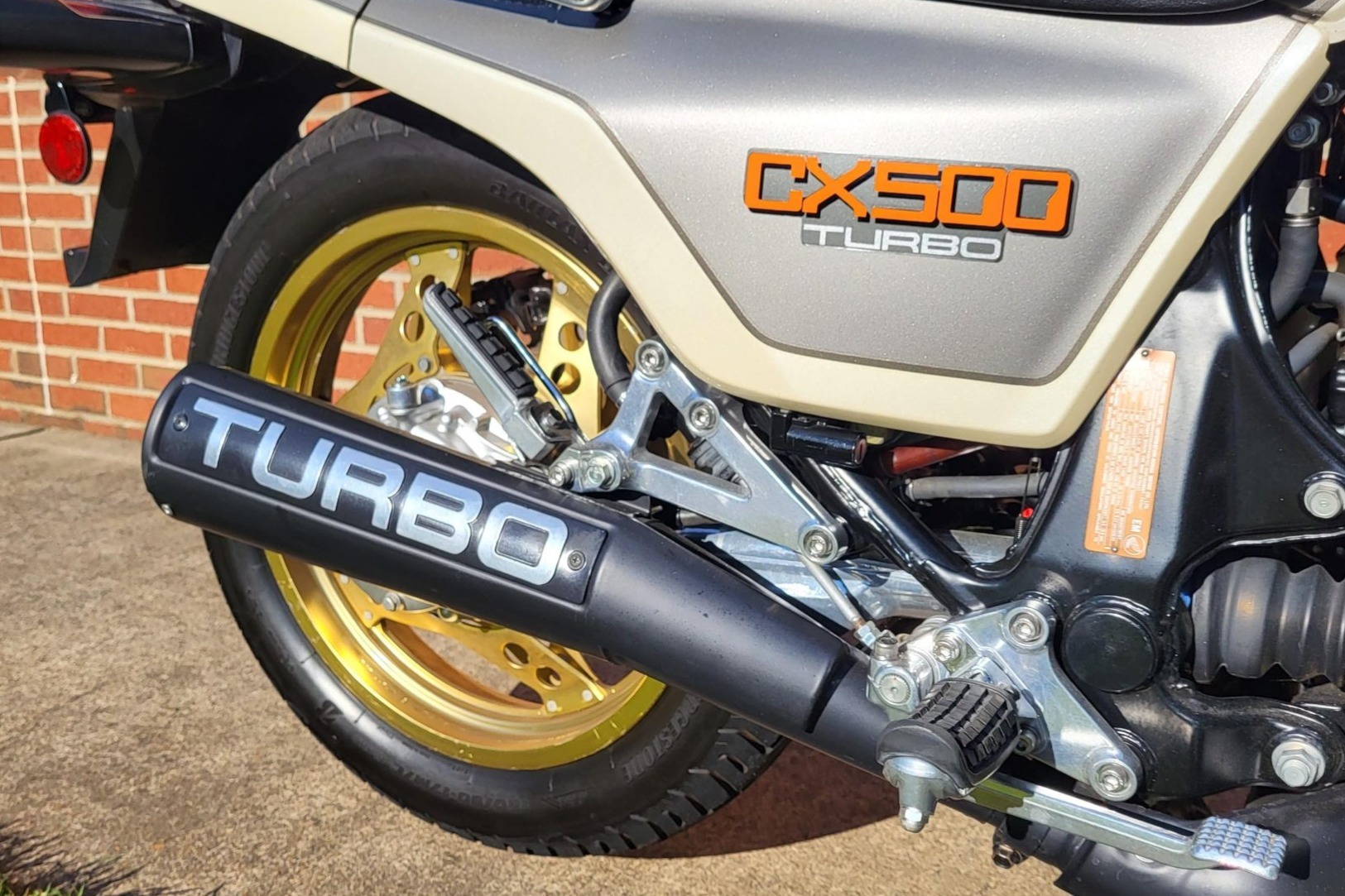
Then there was the price. At $4,898 ($16,870 in 2025), the CX500 Turbo was more expensive than the Honda CB900F, which was $3,495 ($12,037 in 2025). It was still more expensive than a Suzuki GS1100, which was $3,999 ($13,773 in 2025).
Despite that, the turbo bike was so captivating that, by 1983, all of the Japanese big four motorcycle makers — Honda, Kawasaki, Suzuki, and Yamaha — each had their own turbo cycles on the market. Don’t worry, I’ll write about those other ones another time. Honda even launched an updated turbo bike that year with the CX650 Turbo, which made an exhilarating 100 HP, and used a 51mm turbo spinning at a slower speed for less lag.
A Short-Lived Fad
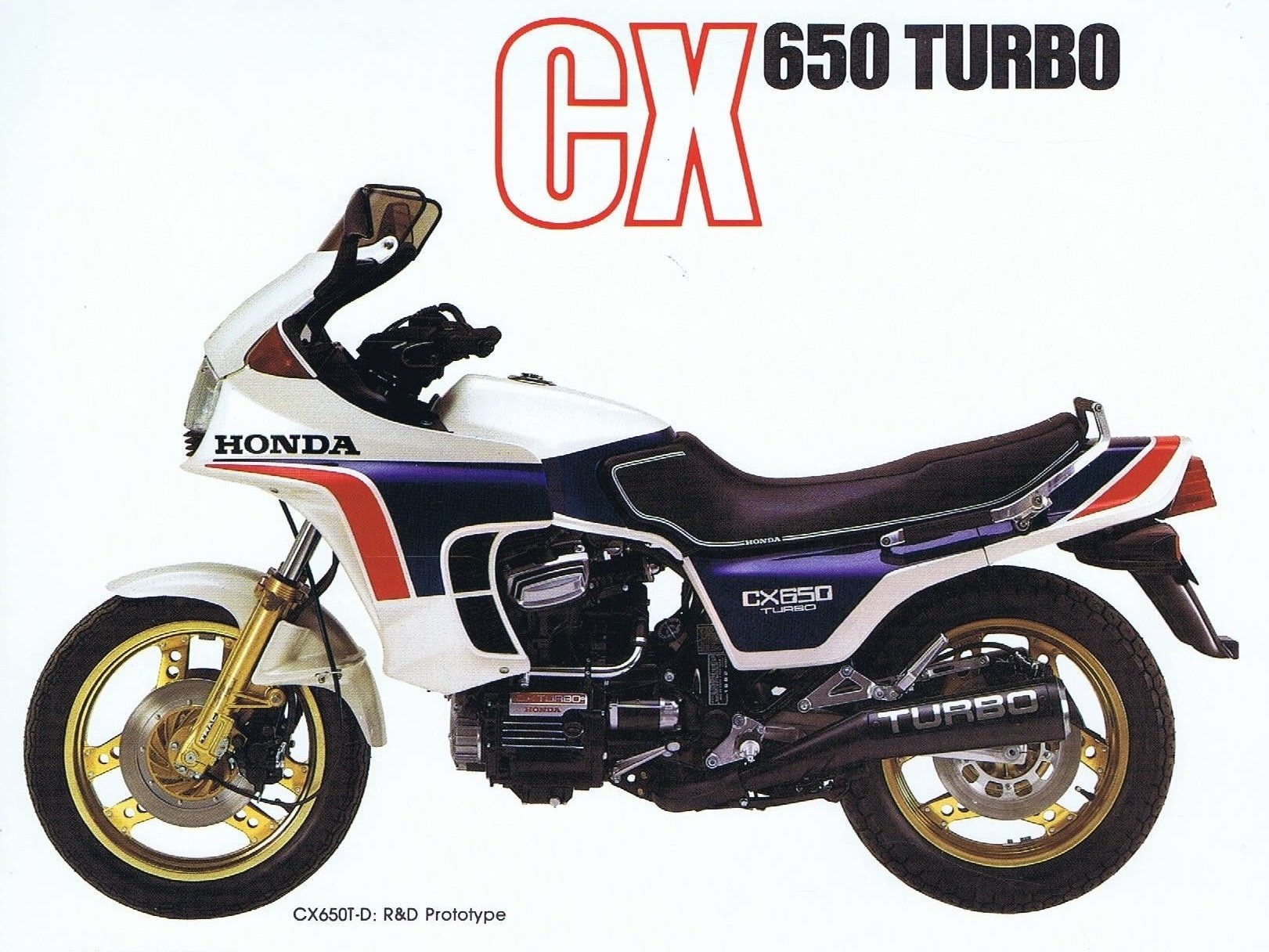
But the fun wasn’t going to last. In 1983, the Reagan administration greenlit the Memorandum on Heavyweight Motorcycle Imports, which initially hit imported motorcycles with greater than 700cc with a 45 percent tariff. This was done to protect Harley-Davidson from a flood of imports. Thankfully, Yamaha, Honda, and Suzuki were safe, as both of their turbo bikes were 650cc mills, but Kawasaki’s turbo bikes got caught up in the mess. Of course, all of these brands had to deal with tariffs on their larger bikes, regardless of whether they competed with Harley or not.
Dodging tariffs was only one hurdle. Because even turbo bikes that didn’t get hit with the tariff were still expensive to buy and complicated to repair when they broke. Reportedly, not all of the Japanese big four built reliable turbo bikes, either.
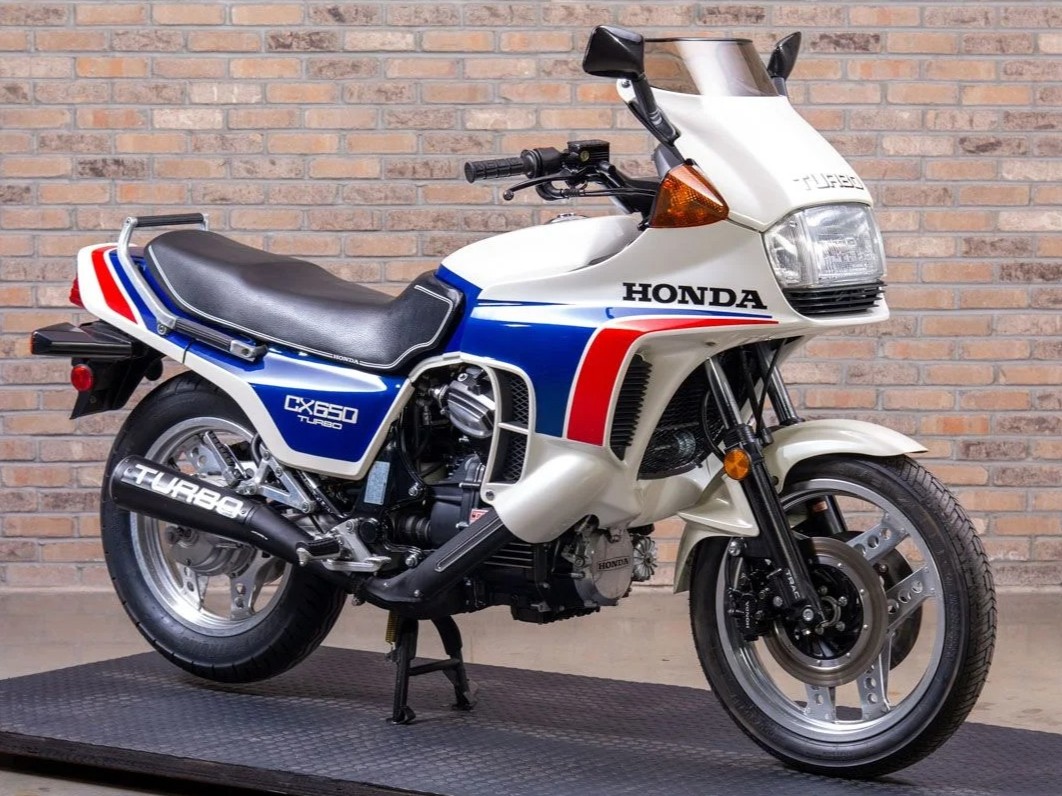
But what arguably killed the turbo motorcycle was the march of technology. Turbocharging was largely a way to offer big engine performance in a smaller, fuel-efficient, and techy package. But the resulting bikes still weighed a lot and had big engine power only when you rode them hard. It wasn’t long before Japan’s motorcycle manufacturers made more fuel-efficient fours that had most of the upsides of the turbo bikes and almost none of the downsides. Honda’s iconic V4s would more or less take the place of the CX turbos.
Rare, And Still Affordable!
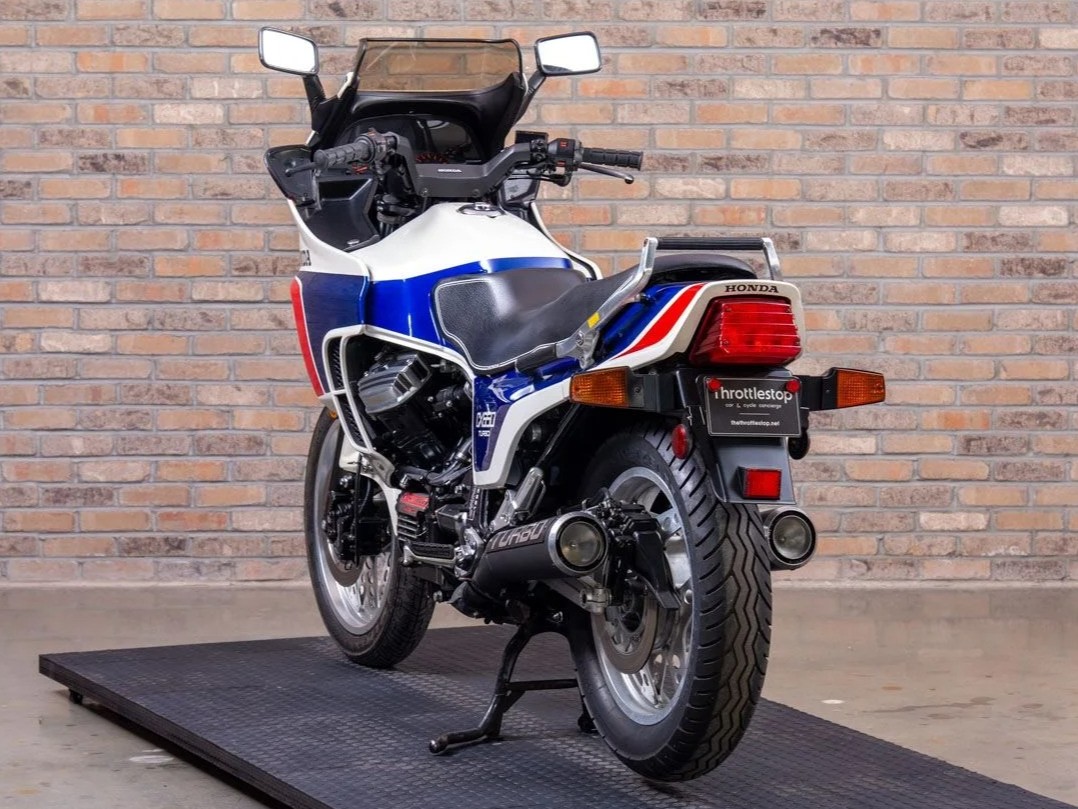
That makes bikes like the CX500 Turbo and CX650 Turbo pretty rare. It’s estimated that only 5,343 CX500 Turbos were built, of which only 2,525 made it to America. There are fewer CX650 Turbos, with an estimated 1,777 examples built, of which around 1,200 made it to America. It’s not even that hard to find a CX500 Turbo or CX650 Turbo. There’s one for sale on Bring a Trailer right now, and another for sale at Throttlestop, a vintage motorcycle dealer near Road America. Most of them sell for under $10,000, so it’s a collector bike that won’t break the bank.
There haven’t been many turbo bikes in the years since. Honda is working on a new V3 engine that has a compressor. Kawasaki’s Ninja H2 line comes with superchargers. But otherwise, turbos remain rare. In theory, you could build a modern turbo motorcycle with a variable geometry turbo and high compression like a turbo car, or you could just build a bike with a hotter naturally aspirated engine and not have to deal with the extra weight of the turbo and its piping. Or, just make an electric motorcycle. At the very least, it seems like the overall motorcycle industry is not in a rush to experiment with forced induction.
Still, it’s wild that, at least for a couple of years, Japan’s motorcycle manufacturers were addicted to turbochargers. Forced induction was seen as the future of motorcycles when it was really just a short-lived fad. Honda built technological marvels with its CX turbo motorcycles and went further than anyone else did at the time. Yet, it turned out to be a dead end. At least it sounds like a hilariously fun dead end.

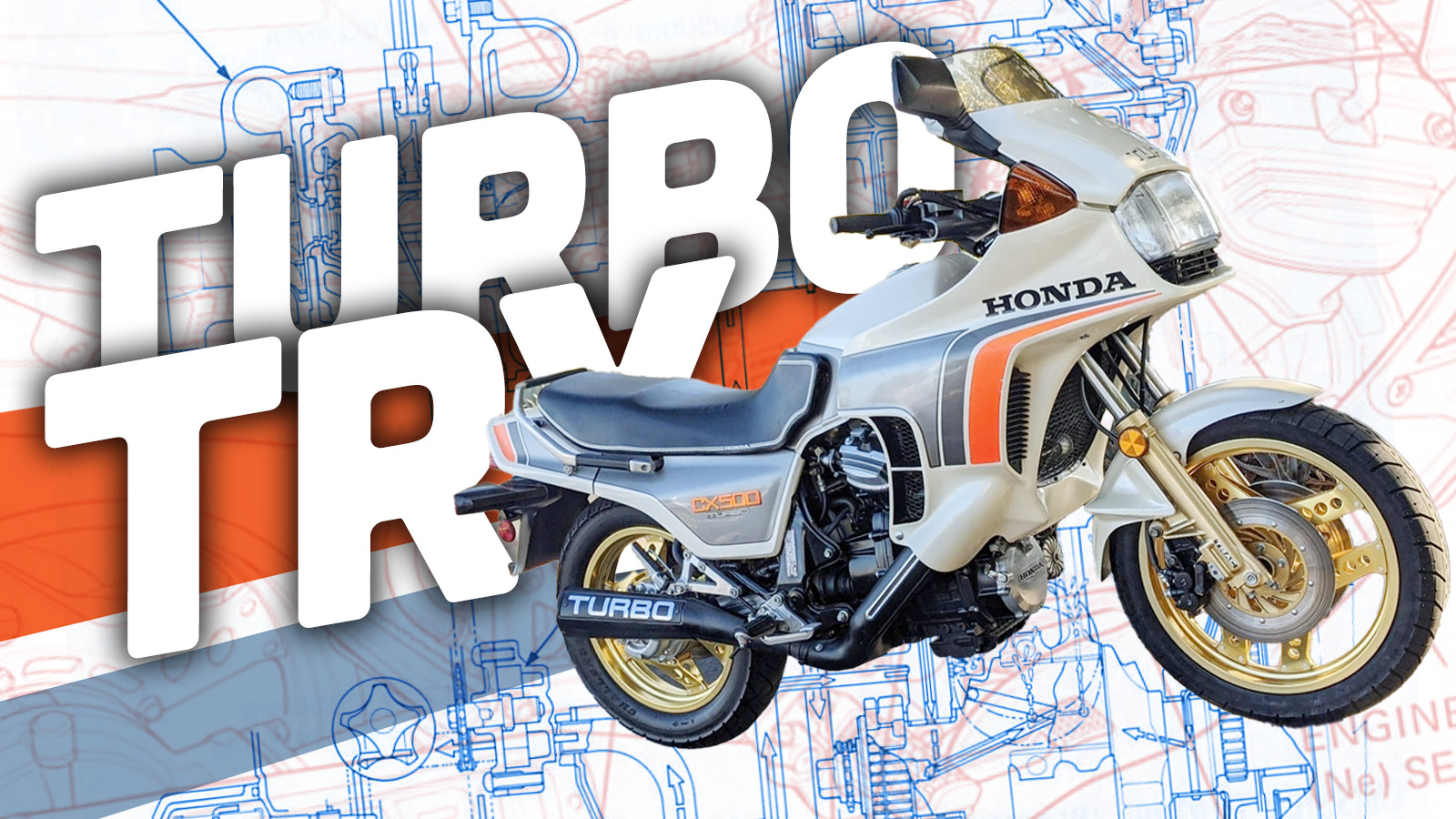



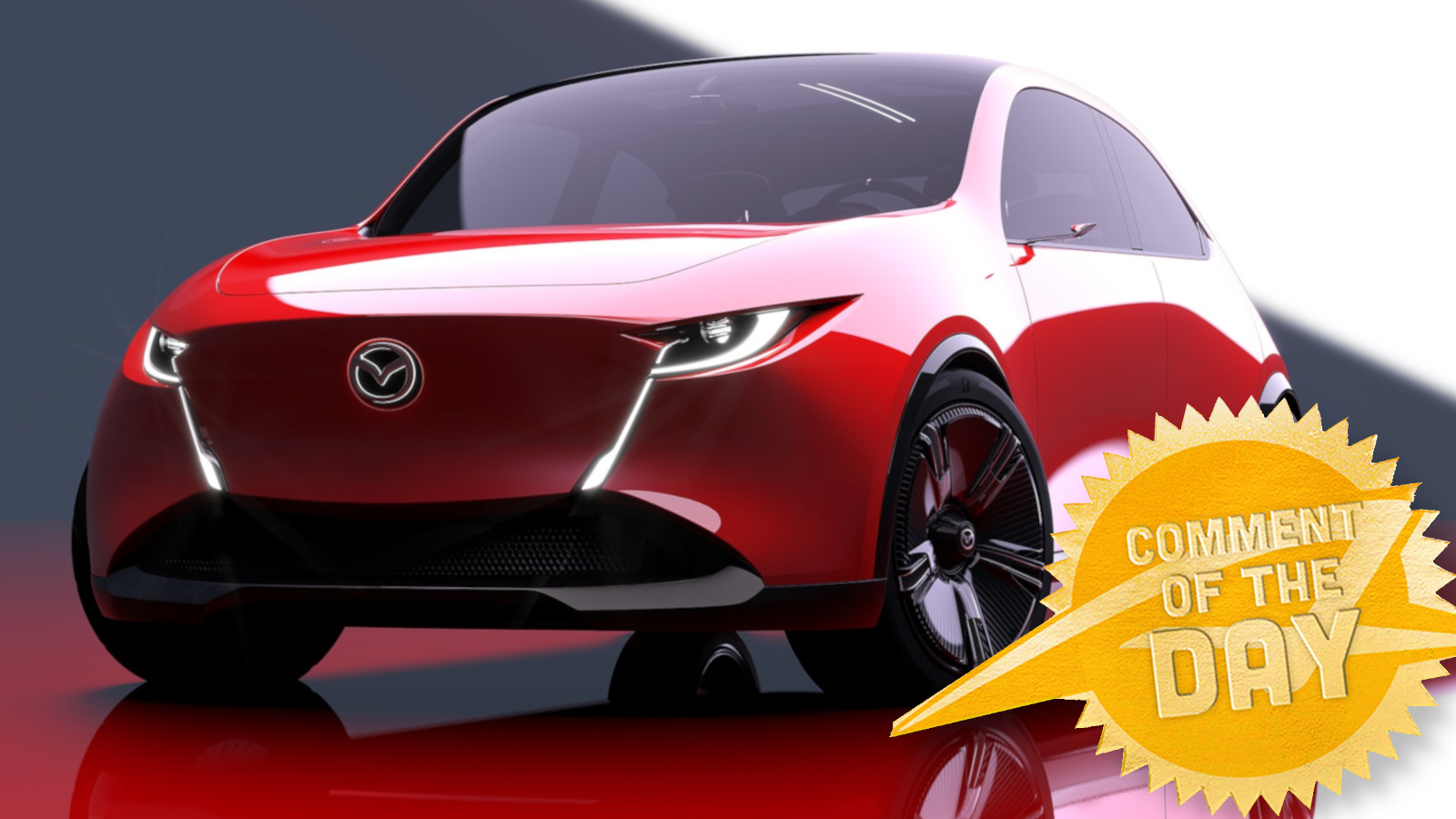
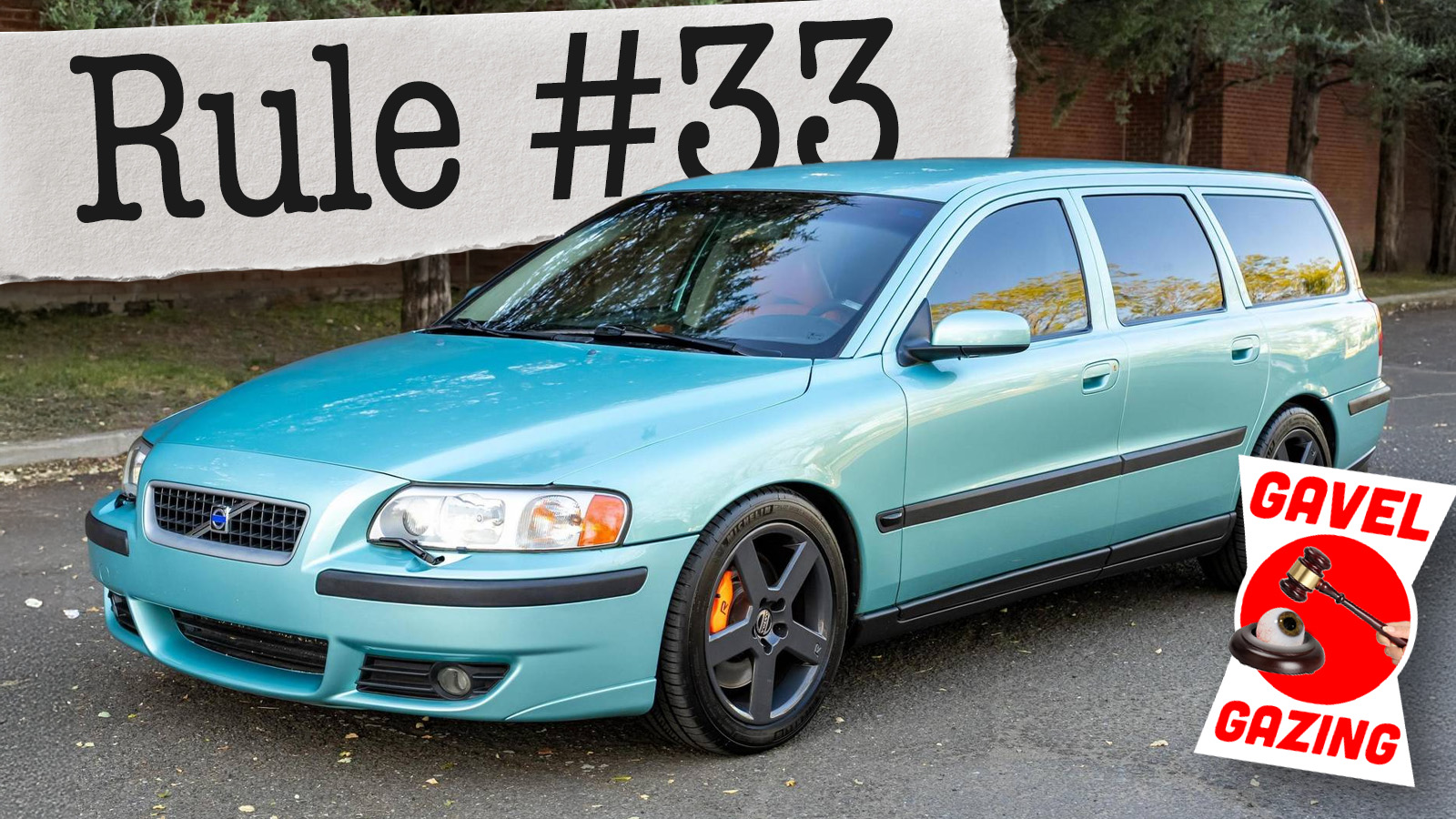
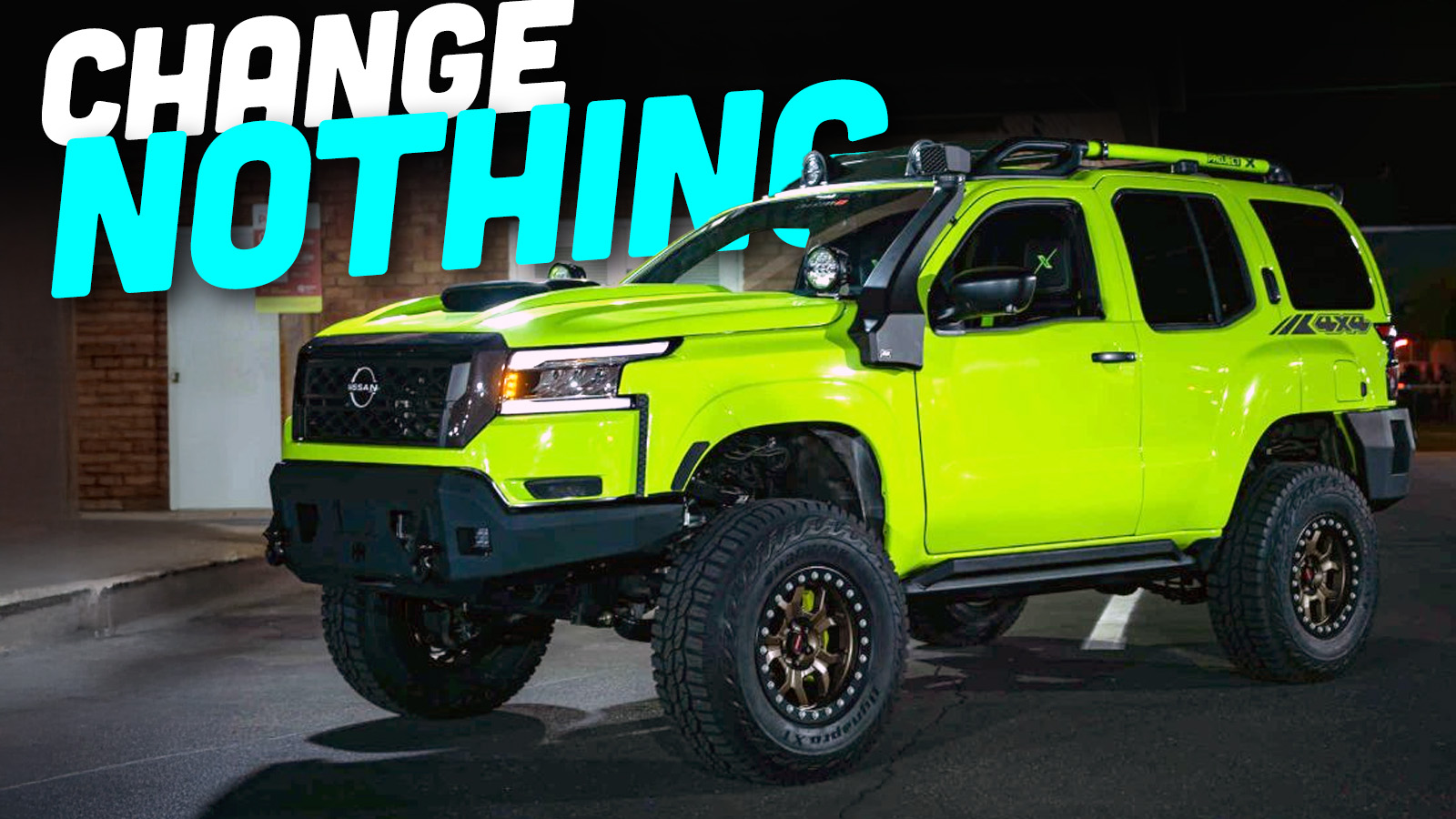
Fun read, Mercedes!
My dad has had a 1982 Yamaha Seca Turbo (650) since it was new. I learned to ride on it as a teen in the 90s. I’d have to wrap my hands forward on the grips and feet on the front of the pegs because as soon as it hit ~4500 rpm when the boost kicked in it took off! The shaft drive was also cool. He had the turbo rebuilt a few years ago (after ~40 years & 70k miles). Otherwise a pretty reliable bike.
He had friends from Yamaha that raced them in period (against all the Japanese turbos). Stories I heard were they’d plug the wastegates and run them hard until they blew the motor. By about 1984-85 they were essentially banned because so many motors were blowing in races the tracks felt they were too dangerous.
Funny Reagan increased tariffs in 83 when he a few years later in 87 said they were awfully bad
I dig that dash – jeeze that’s a full gauge setup, esp back in the 80s. Even a freakin’ clock.
Just over 20 years ago I had a chance to buy a CX650 Turbo but was worried I wouldn’t be able to give it the maintenance it would require to stay on the road. I bought my first Nighthawk instead. I still think the turbo would be cool but I don’t regret getting into Nighthawks one bit.
Always wanting my own spin on things, I would have loved a CX650 sans turbo with the cool body work.